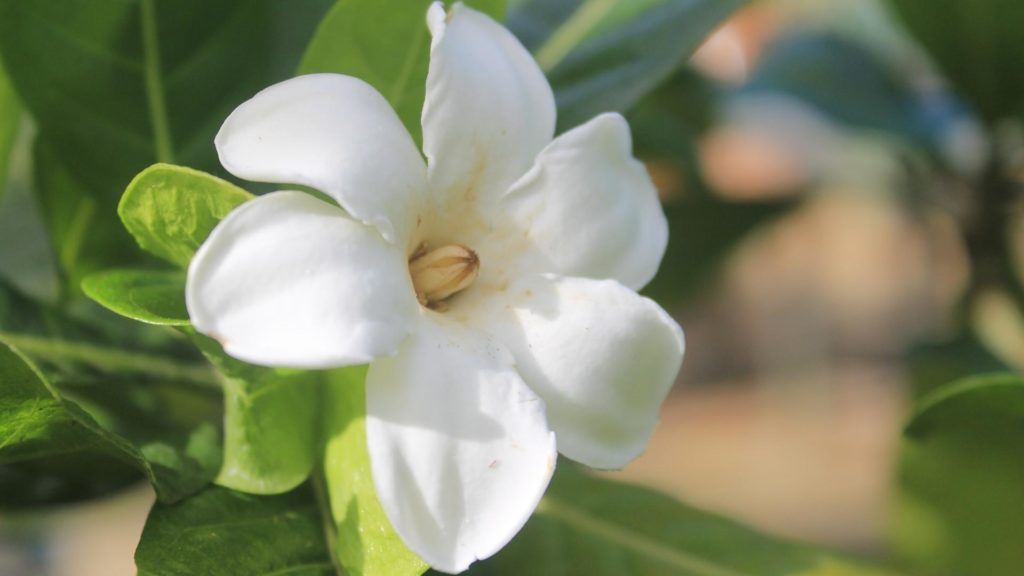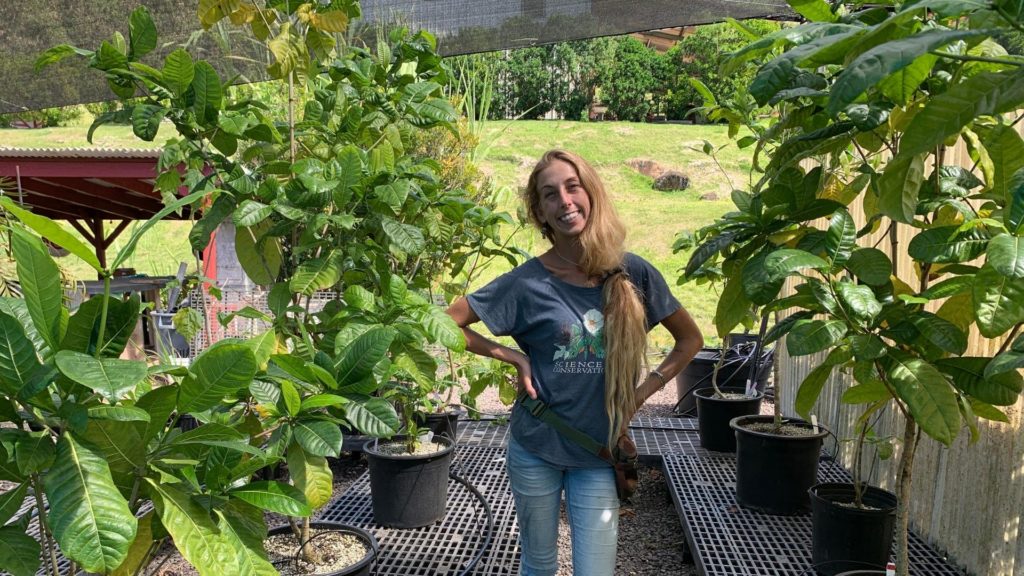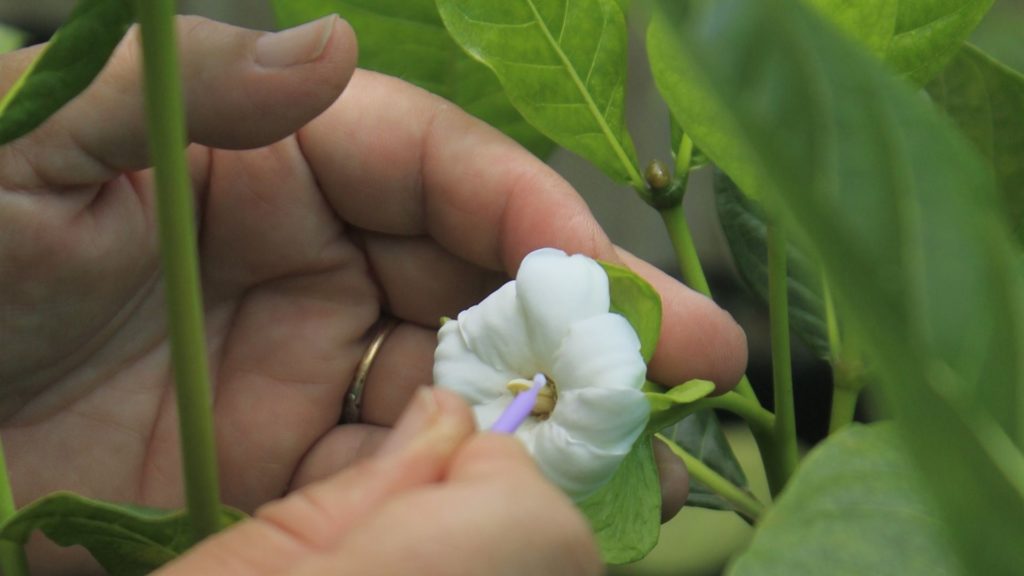Born from volcanoes and shaped by wind, water, and waves, the Hawaiian islands evolved over millions of years to become some of the greatest biological treasures on Earth. What would we see, hear, and smell if we could travel back in time and explore Hawaii’s ecosystems as they were thousands of years ago? Perhaps we would see lush and multilayered forests protected by a tall canopy of trees that dapples sunlight onto the shrubs and dense understory below. We might hear sweeping winds and chattering branches punctuated by the chirps of colorful forest birds. The smell of damp soil, mist-covered leaves, and sweet, delicate floral notes might fill the air. It’s similar to what we might experience today with a few glaring absences.
The unique flora and fauna of the islands are declining at an unprecedented rate. With 90% of the 1367 unique plant species in Hawaii endemic to the islands, Hawaii sits atop the list of places with the most endangered and extinct species. The situation is dire, but we have the tools and resources needed to change course. NTBG and local, state, federal, and private conservation partners are connecting the science, conservation, and research dots to secure the survival of endangered trees such as the Gardenia remyi.

A member of the Rubiaceae (coffee) family, Gardenia remyi (known as Nanu in Hawaiian) is an endemic tree found on the Islands of Kauai, Molokai, Maui, and Hawaii. Its habitat ranges from mesic to wet forest, ridge shrubland, and wet cliff. The branches of Gardenia remyi are covered in minute, soft, downy hairs, and leaves cluster towards the tips of the branches. The flowers are white and fragrant with delicate cinnamon, vanilla, and coconut notes. Traditional uses of the orange fruit pulp include creating yellow dye for kapa cloth. With approximately 80 mature trees remaining in the wild, Gardenia remyi is Critically Endangered on the IUCN Red List and threatened by displacement from nonnative plants, landslides, and reduced reproduction in the wild.
“it can be quite overwhelming and wondrous to discover new individuals of this large tree species”
“I’ve had the honor to work on the conservation of Gardenia remyi throughout its known range. Trees of this species have always been few and far between,” said Ken Wood, NTBG Research Biologist. “Currently the known number of wild individuals stands at around 80. Because there are so few trees remaining, it can be quite overwhelming and wondrous to discover new individuals of this large tree species, especially when they are in flower and fruit! I’ve observed Gardenia remyi in both wet and mesic conditions, and more often than not they occur in some of the most remote and isolated forests of the Hawaiian Islands. I feel a sense of relief knowing that there are numerous talented individuals working on preventing the extinction of Hawaiian Gardenia and others anonymously supporting conservation efforts,” Ken continued.
When you think of rare plant conservation and saving species like Gardenia remyi, the image of field botanists like Ken rappelling over cliffs or adventuring through the wilderness to locate, document, and collect rare plants may come to mind. With more than 50 years of tropical plant research and conservation experience, it is certainly an image synonymous with NTBG.

However, botanizing, and collecting plants for study is only one piece of the complex plant conservation puzzle. Tucked into the Lawai Valley on the South Shore of Kauai, dedicated NTBG staff, volunteers and partners propagate and grow endangered species at the NTBG Conservation Nursery. At first glance, the Conservation Nursery looks like almost any other – sheltered in an unassuming, plantation-style building flanked by propagation tables and shade cloth. However, NTBG has collected or co-collected at least 19 endemic taxa believed to be extinct in the wild that are prospering in nursery conditions. Hawaiian species such as Delissea rhytidosperma, Kadua haupuensis, Kanaloa kahoolawensis, Stenogyne campanulata, and others might have gone completely extinct had it not been for NTBG efforts.
“At the NTBG Conservation Nursery, our focus is on providing quality care for threatened and endangered native plants.”
“At the NTBG Conservation Nursery, our focus is on providing quality care for threatened and endangered native plants. It is our role to be prepared at all times for any collection that may enter the nursery,” said Rhian Campbell, NTBG Conservation Nursery Manager.“ Gardenia remyi is one of those collections that needs a long-term approach to assist survival because there is little reproduction occurring in the wild,” she continued.
Thanks in part to a grant from Fondation Franklinia, a Swiss private foundation that supports the conservation of globally threatened trees, NTBG and partners have a unique opportunity to focus on native trees in need of critical conservation. Eleven species known to the Limahuli Valley, including G. remyi, with a remnant population of fewer than ten individuals have been chosen for the three-year study. Over the course of the project, NTBG will collect and propagate seeds to grow trees that can eventually be outplanted in the Limahuli Preserve to add genetic diversity to and reinvigorate wild populations.
Gardenia remyi has been growing in the Conservation Nursery periodically for decades, but until recently the trees had never thrived, in fact they appeared stunted, rarely flowered and many were lost to poor overall health. Since the Securing the Survival of the Endangered Endemic Trees of Kaua‘i, Hawai‘i project began in 2020, much has been learned about the soil amendments and conditions required to grow these rare and beautiful tropical trees ex-situ.
“Conditions in our low-elevation nursery are considerably different from conditions in the mountainous, higher-altitude interior of the islands where these trees are known to exist today,” remarked Hayley Walcher, Living Collections Assistant. “In addition, the environment in which these trees evolved has changed quite drastically since Polynesian Voyagers first arrived on the islands. As horticulturalists, one approach we can take is to try to imagine what conditions would have prevailed in those years before human contact and try to replicate them in the nursery,” she continued.
In recent scientific history, wild populations of Gardenia remyi have been documented along our ridgelines and forests. Therefore, before human contact, it is possible that G. remyi would have been found in landing and nesting zones for coastal and forest birds, where a significant amount of guano would be present in the soil making it rich in phosphorus, nitrogen, and other essential microbes. Operating under that hypothesis, nursery staff started to research the conditions in which the plants were likely to thrive and connect the dots with field botanists to better understand their habitat today.
“With knowledge of past and present habitats, we started to use natural soil amendments that encouraged the growth of microbes and fungi…”
“We noticed early on that our traditional method of growing plants in a sterile media with commercially available fertilizers was not supporting the long-term survival of Gardenia remyi,” said Rhian. “With knowledge of past and present habitats, we started to use natural soil amendments that encouraged the growth of microbes and fungi within our potting media, such as worm castings and mycorrhizal inoculants, and saw an almost instant response in the health of our trees.”
In January 2021 nursery staff conducted a few more informal experiments using native soils and other natural amendments as topdressing and within a few months new sets of leaflets emerged and the leaves darkened into a healthy, deep green color. Since then, staff and volunteers have consistently fertilized Gardenia remyi treelets with natural amendments such as worm castings, biochar, fish fertilizer, seaweed extract, seabird guano, composted manure, and mycorrhizal inoculant.
Hawaiian ecosystems are complex and interconnected biological communities which makes growing rare plants ex-situ a challenge. But, with signs of success starting to emerge for G. remyi in the nursery, the next step for staff was to determine the amount of water and drainage needed for the trees to thrive. “We used our understanding of the high drainage environments that they grow in naturally to adjust the media mix we were using, adding more cinder and perlite while also adding more peat moss to help lower the pH and better match the somewhat acidic conditions they prefer in the wild,” remarked Hayley.

With soil, water, and drainage conditions now carefully tailored for this species in the nursery, G. remyi quickly outgrew its space. Thanks to a generous donation, a new rare tree area was created in the nursery that allows staff to keep a close eye on the trees and protect them from fungal pathogens, spider mites, and other leaf-sucking insects.
While there is much to celebrate with Gardenia remyi today, challenges to plant reproduction and preserving genetic diversity still lie ahead. Only one G. remyi tree growing in the nursery is currently flowering; this tree was propagated via air layering from a mature, flowering tree while the others were grown from seed or cuttings from younger trees and are not yet mature enough to flower.
To further complicate things, plants generally employ strategies to ensure that they have the best possible mix of genetics present in their offspring, and without knowing which strategies are in use by a particular species, it can be tricky to determine how to time pollination or provide the necessary match-making environment to produce successful fertilization.

Trees in the genus Gardenia are often dioecious plants, meaning that trees often produce either male or female flowers. The nursery staff noticed that the flowers on our lone air-layered G. remyi tree seem to produce both male and female parts on the same flower. “This often means it is easier to produce self-fertilized seed, so it is unclear why we have been unsuccessful thus far.” said Rhian. “We have made attempts at self-pollinating the flower, pollinating a flower with pollen collected in the wild and brought to the nursery after a period of cold storage, and recently by mixing pollen from two flowers on the same tree. So far we have not been successful at producing seed, but will continue testing different pollination strategies,” she continued.
NTBG’s ex-situ collection of G. remyi trees represents only six trees from the wild and were propagated by a combination of cuttings, seed, and air layering. One of our immediate goals is to continue bringing these propagules of wild plants into cultivation to increase the genetic diversity of our collection. This will provide the best chance we have to plant enough healthy new trees that they will be able to produce offspring on their own again.
Humans and nature are inextricably connected. Protecting and restoring our natural ecosystems is one of the most promising climate solutions we can invest in to safeguard our future. The conservation story of G. remyi and other endemic trees in Hawaii not only connects us to the past but also shows us there is a way forward.
National Tropical Botanical Garden (NTBG) is a not-for-profit institution, dedicated to discovering, saving, and studying the world’s tropical plants and sharing what is learned.
Our network of five botanical gardens, preserves, and research facilities encompasses nearly 2,000 acres with locations in Hawaii and Florida. Thousands of species from throughout the tropical world have been gathered, through field expeditions, collaborations with other institutions and researchers, to form a living collection that is unparalleled anywhere.
Our collection includes the largest assemblages of native Hawaiian plant species and breadfruit cultivars in existence. Many of the species in our collections are threatened and endangered or have disappeared from their native habitats. In our preserves and beyond our gardens, NTBG is working to restore habitats and save plants facing extinction.
Our gardens and preserves are living laboratories and classrooms for staff scientists, researchers, students and visitors from all over the world. You’re invited to be a part of our team. Help us save plants and make a difference by joining as a member! Sign up by May 31, 2022, for a chance to win a VIP experience.